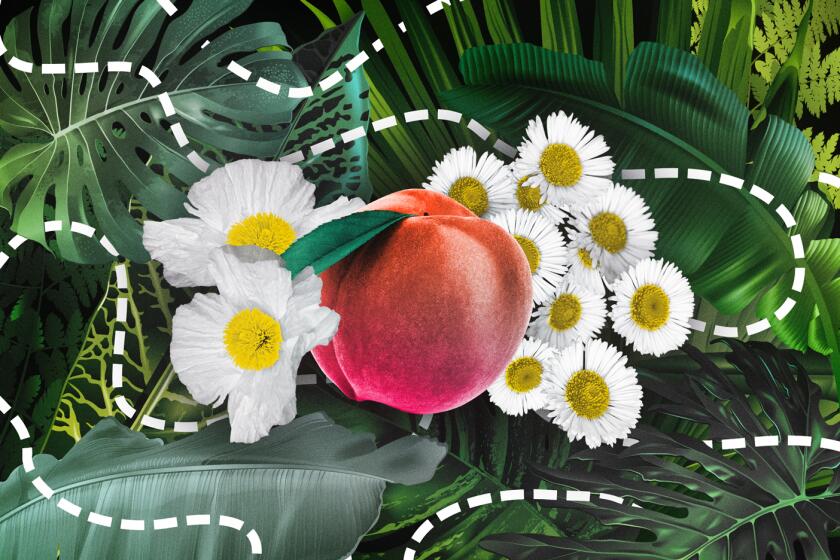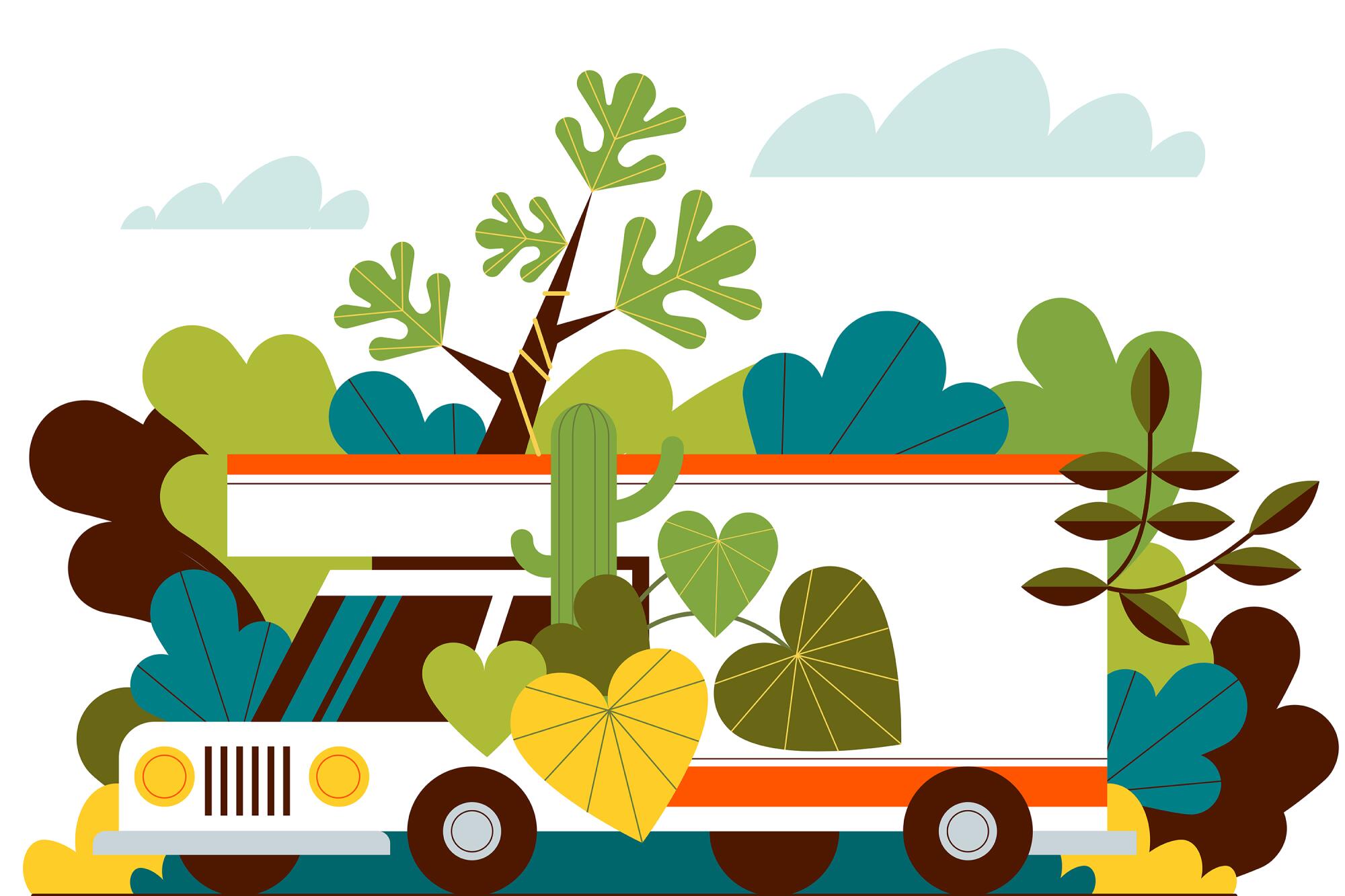
As I planned my move from Brooklyn to Los Angeles, I found myself awake at 3 a.m. on certain nights, frantically googling, “how to move your houseplants a long distance.”
“Put trash bags around the base of the pot,” some websites advised.
“Use gardening Velcro,” others said.
“Don’t bother,” a few commenters in online forums warned. “Most long-distance moving companies won’t take even them.”
I contemplated whether it was worth the hassle to move any of the 50 or so houseplants that filled my oddly shaped corner apartment. Surely I could find some monsteras, begonias and birds of paradise in sunny California. But I just couldn’t surrender to the sadness of leaving behind my most sentimental plants, like those grown from my mom’s cuttings.
Finding your favorite nursery can be thrilling. Here are our picks for the best independently owned plant nurseries near Los Angeles.
Reading the many threads and blog posts on this topic, it was clear I wasn’t the first person to face this very specific moving qualm. When I mentioned the dilemma to a friend’s mom, she told me her new neighbors had pulled up to their home in a van rented specifically to transport their houseplants, which they call “their babies.” I could relate. I mean, it’s hard to not feel attached to a plant when you’ve cheered every time a new leaf unfurled.
So I decided to find out how, exactly, I could move houseplants a long distance — for me, it would be about 2,500 miles. I contacted a variety of experts who own, care for, ship and sell plants locally and nationally. I decided to use their advice to try out a few different options — driving, flying and shipping — and see which routes are the easiest, cheapest and most practical.
Here’s what I learned along the way.
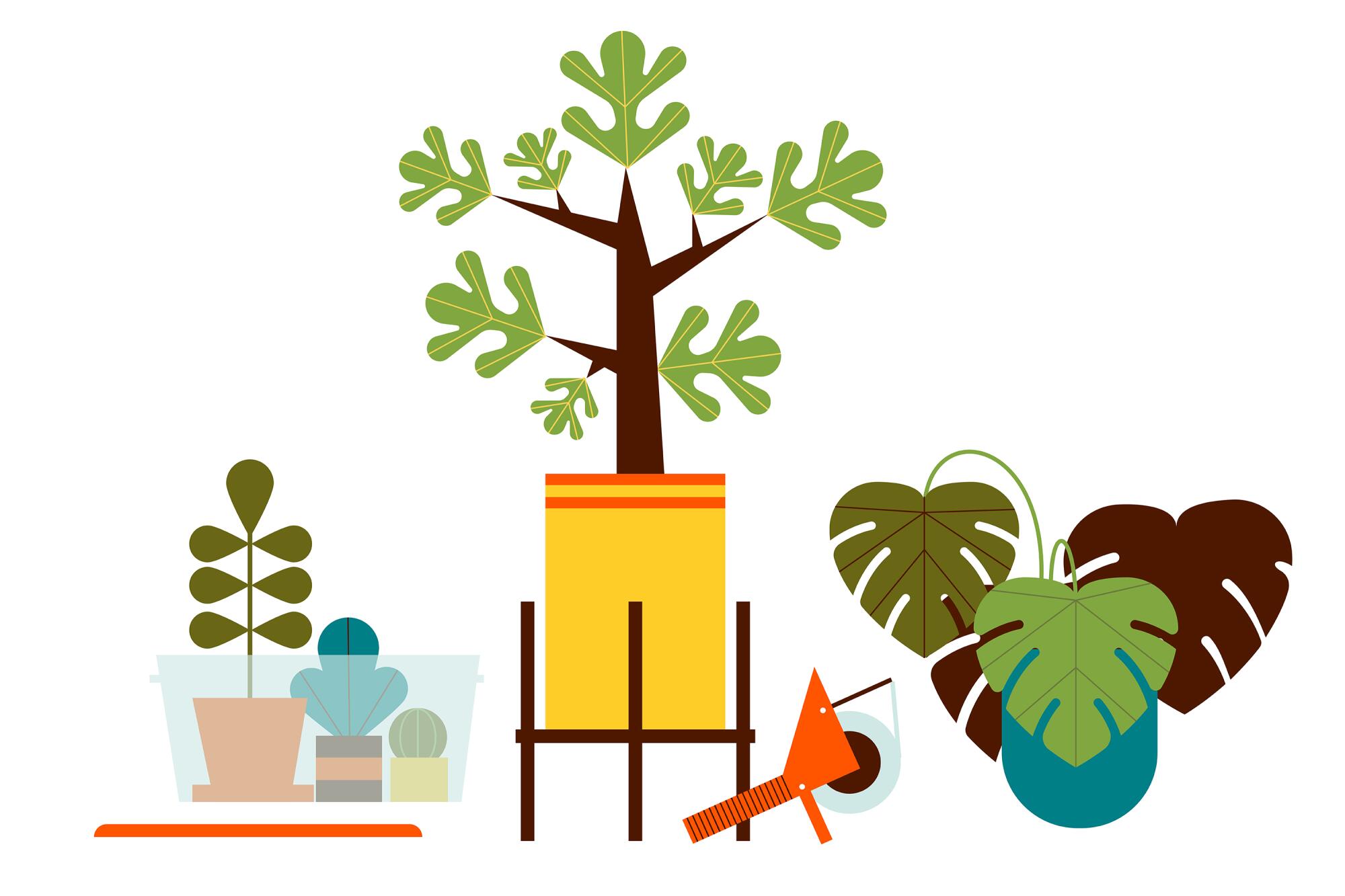
Figure out what’s worth moving
Some of my houseplants were obviously not going to make the cut, like the street rescues and the propagations that never quite flourished, but others took more consideration. In deciding whether to move a plant, it’s important to first make sure it is permitted in your new home state (the California Department of Food and Agriculture allows pest- and disease-free indoor plants that are planted in a commercial potting mix), and then determine whether it’s safe for its new environment.
Valerie Borel, the horticulture and master gardener program coordinator at the University of California’s Agriculture and Natural Resources division, said that it’s never worth the risk of harming your future home by importing pests, diseases or something invasive.
“Invasive plants that escape into California’s wildlands have the potential to take over native plant communities and native animal habitat,” she said, noting that California is home to many endangered species.
Once you’re clear on those ends, you can consider other factors, such as how challenging the move would be. I tried to figure out which of my plants would be reasonable to transport, size-wise. Anything taller or wider than about 3 feet seemed too intimidating and expensive for me to move, so I chose to stick with small- and medium-sized plants that would do well in a warmer climate.
When preparing to move your plants, Borel suggests, keep a close eye on them. “For the last couple of months before you make the move, concentrate on making sure that your plants are healthy and well watered — not over watered — and they’re fertilized and have no visible pests anywhere,” she said. “Don’t bring a plant that is not doing well with the thought that once you get here, you’ll be able to nurse it back to health.”

Pack plants into your car or moving truck
When Danae Horst moved to Los Angeles from Seattle a decade ago, she knew she couldn’t bring all of her beloved plants.
“I packed one of my very first ever plants, which was an aloe,” she said. “And then just a handful of other smaller things that I knew would do OK in the heat of California.”
Now, she estimates that she has more than 100 plants at her home in Pasadena, and her plant nursery, Folia Collective, has figured out its own ways of transporting plants both locally and nationally.
“I generally find anything 6 feet and under is actually a breeze to fit in the back of a Prius,” Horst said.
But the way plants are wrapped for the car or truck also matters. A larger plant that’s traveling in a nearly empty vehicle will still need its foliage wrapped in protective paper, such as brown kraft paper or newspaper, and more rigid protection might be necessary for a car filled with boxes and moving miscellany. Horst warned that it’s more difficult to move taller plants on their side if they’re already in large, heavy ceramic pots.
Heeding that wisdom (and the space restrictions of my roommate’s car), I decided to pack four medium and small plants in lightweight pots. I bought a $16 clear bin at the local dollar store, and a friend helped me drill about a dozen ventilation holes in the lid to prevent the plants from getting too hot. I nestled four of my less finicky plants — all varieties of pothos — in the bin with a bit of tape anchoring them down.
Considering the cost of the bin and the space needed, this was certainly the cheapest option. Ultimately, all four of my plants made it from Brooklyn to Minneapolis (where my roommate stopped to visit family) with no spillage or signs of stress. The rest of the trip to L.A. was similarly smooth, and though I wish there’d been space for another plant or two, I’d be wary of packing larger plants alongside heavy boxes.
Sometimes there are also obstacles on the road — “Don’t be surprised if you are traveling by vehicle and the border guards stop you or even confiscate something,” Borel said — but it completely depends on where you’re driving to and from.
“Each state has different laws and codes, so most of the time you can fly right through without even stopping,” Borel said. “But you might come to a checkpoint where they’ll make you stop.”
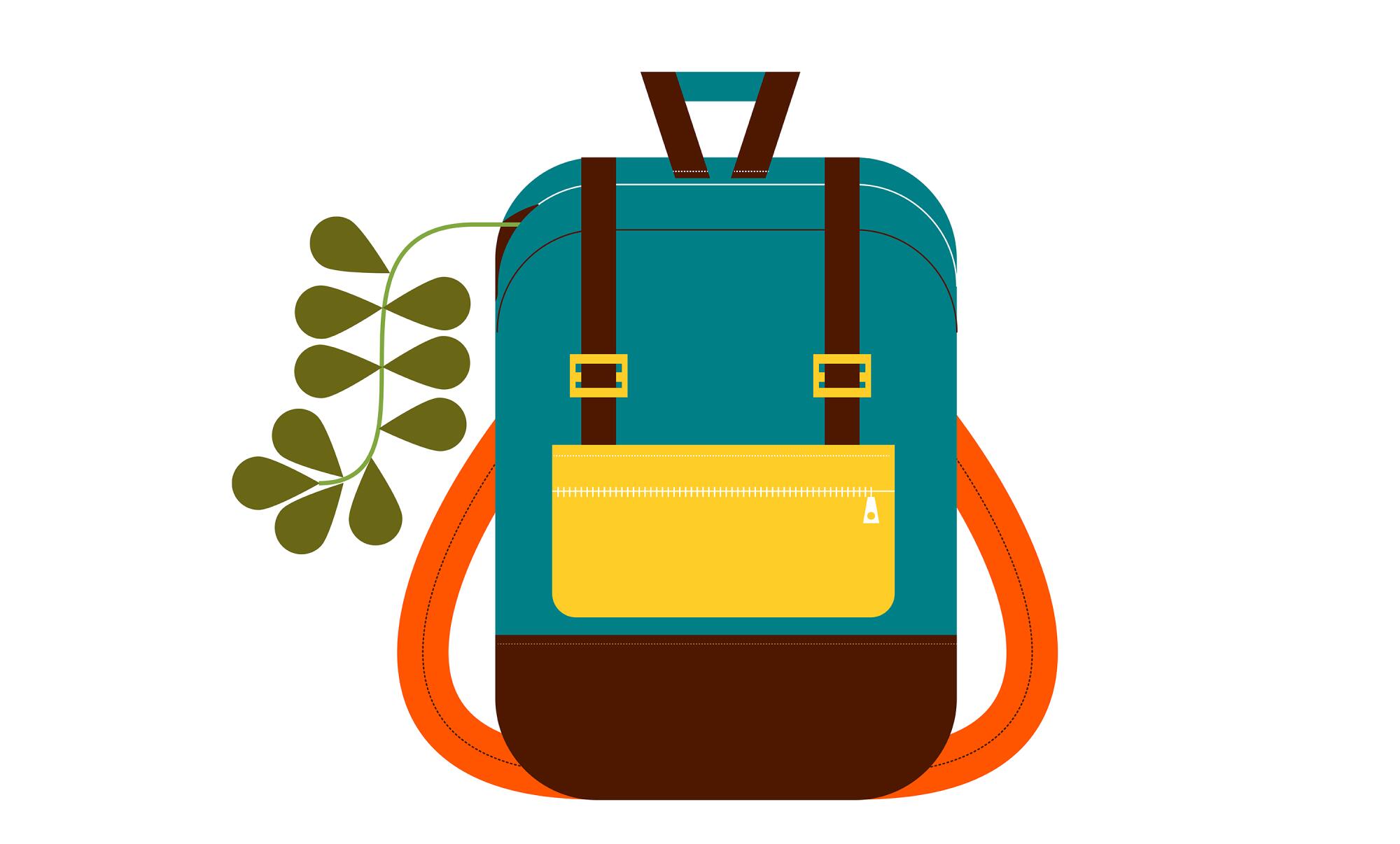
Bring smaller plants on the plane
I flew back and forth from Brooklyn to L.A. twice during the month of my move, so I decided to bring several plants in a carry-on bag both times.
Visiting the dollar store yet again, I bought a $5 plastic container that fit my airline’s size restrictions for personal items. For the first round, I decided to take three plants: a small monstera, a polka dot begonia and a white butterfly arrowhead.
My sister helped me wrap each plant with newspaper, taping some around the sides of each plant pot to ensure all of the leaves were protected. We filled the extra spaces in the container with a pair of sweatpants to prevent any movement. I chose to pay the $30 fee to check my other luggage (so I wouldn’t be carrying too much) and brought extra newspaper and tape with me in case I had to rewrap my plants on the other side of security.
To prepare for the low clearance of overhead carry-on bins, I’d recommend packing plants that are shorter than 12 inches or ones that have flexible and strong leaves. I also brought a travel-sized spray bottle in my bag, so I could check and mist the plants on the plane, which tends to be very dry.
For my second flight, I was a bit more ambitious. I brought a nearly 6-foot-long string of dolphins, a spider plant, a rex begonia, a Swedish ivy cutting and a pothos cutting, nestling the newspaper-wrapped vines and plants into the same container with more help from my sister.
But not everyone has had such an easy experience with the Transportation Security Administration.
“I’ve taken a full pumpkin that I grew on a one-hour flight from L.A. to Sacramento, and you would have thought that I had contraband,” Borel said. “They stopped short of cutting into the pumpkin.”
However, if you’re comfortable with the potential questioning and other uncontrollable factors that come with flying, this is an incredibly cheap and effective way to transport smaller plants and cuttings.
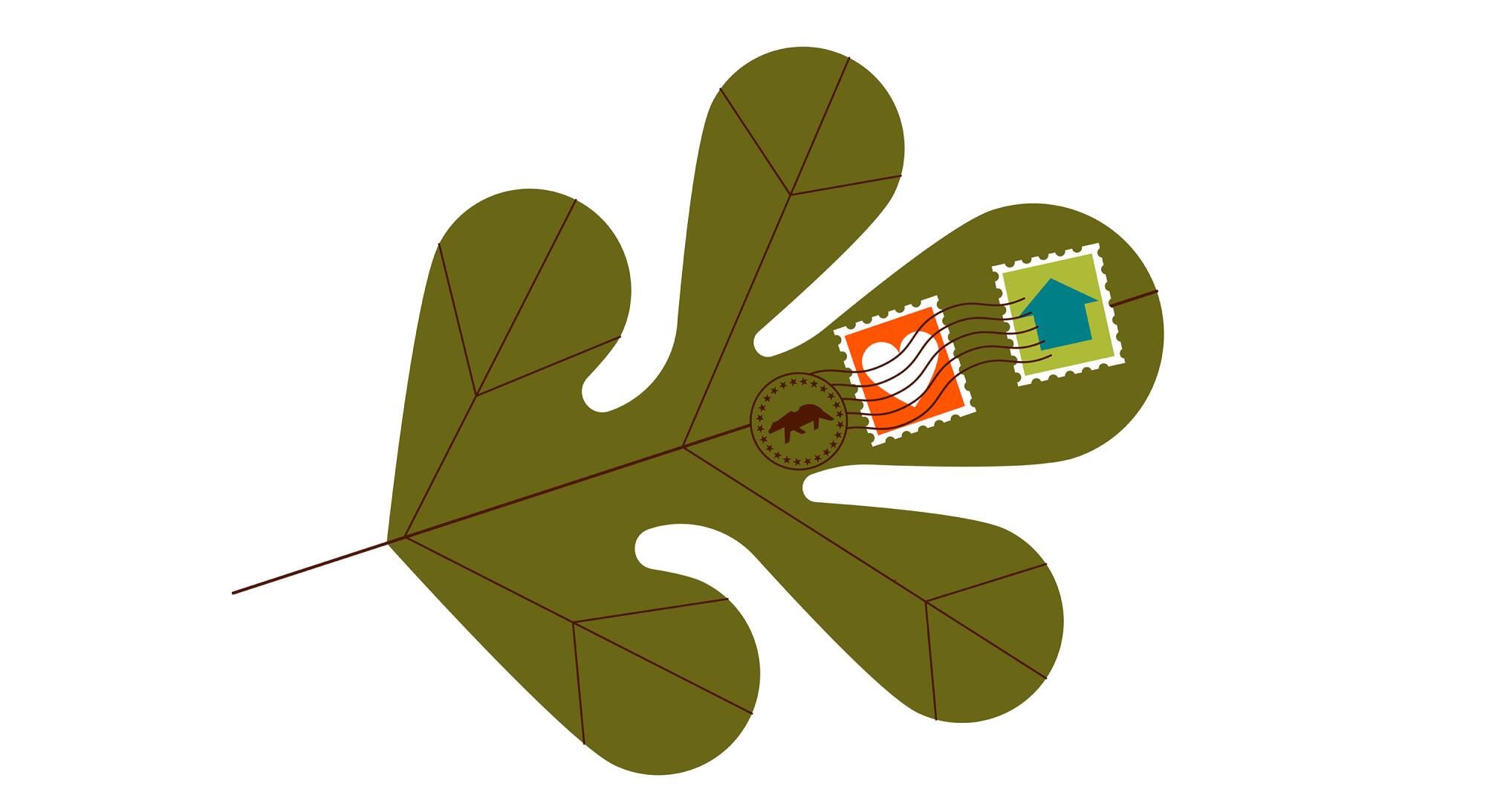
Ship plants that won’t fit otherwise
Compared to flying or driving, mailing plants is the most expensive and stressful way to get them to your destination. I paid a total of $122 to ship three plants — a money tree and two types of pothos — in two boxes.
I chose to wrap each of my plants’ foliage in newspaper and brown paper, padding the soil down in each pot with damp paper towels. For my largest plant — a nearly 4-foot-tall money tree — I took clippings off the top and gave them away to friends so it would fit in my box. I cut a piece of cardboard to fit the width and depth of the box, cutting a hole in the middle so I could wedge the ceramic pot inside the box with no chance of movement. I added tape on the bottom of the pot and the edges of my cardboard wedge, filling the remaining space in the box with more brown paper.
All of the experts I spoke with recommended watering each plant several days in advance, wrapping foliage in brown kraft paper or newspaperand sending them via UPS (rather than the United States Postal Service or FedEx). But no matter which mail carrier you choose, it’s worth stuffing all of the extra space in each plant’s box very thoroughly.
“I generally find paper is best as a packing material,” Horst said, suggesting any paper larger than a standard 8-by-11-inch sheet. “Slightly fluffy, but you don’t want it to be easily crushable either.” She suggested using materials like styrofoam and bubble wrap that may have come with other packages and purchases.
Folia Collective often chooses to tape plants down to the box to keep them in one spot, filling the dead space in the rest of the box to prevent any shifting. “You basically have to imagine that at any point, someone is going to drop kick the box over a fence,” Horst said.
When my plants arrived, I noticed that while both pothos were in decent condition, the money tree would not bounce back quickly. It had bent stems and yellowing foliage that didn’t seem to improve in the following week, making me wish I had left the healthy plant with a friend back in New York.
“It is natural for live plants to show minor signs of stress after being shipped,” said Maureen Newman and Erin Marino in an email. They both work at the Sill — Newman is a senior associate of plant sourcing and Erin Marino is the company’s editorial director — which has shipped more than 1 million plants since it was founded in 2012.
“Removing damaged foliage gives the plants back energy for new, healthy growth,” they continued. “Having a little patience, as your plant bounces back and settles into its new home, helps too.”
Ultimately, I moved 15 of my plants from New York to L.A.: four in the car, eight via plane and three through the mail. I preferred flying with them over the other options because it was the quickest, most straightforward process, but the plants that traveled via car seemed to arrive healthier and happier than the rest.
And I really only regret moving one of them (R.I.P. money tree), which makes the whole process feel worth it. This project also didn’t stop me from buying a large fiddle leaf fig and bird of paradise at Ikea before I even bought a couch, and seeing all of my favorite plants truly made my new L.A. house feel more like home.
More to Read
Sign up for The Wild
We’ll help you find the best places to hike, bike and run, as well as the perfect silent spots for meditation and yoga.
You may occasionally receive promotional content from the Los Angeles Times.
